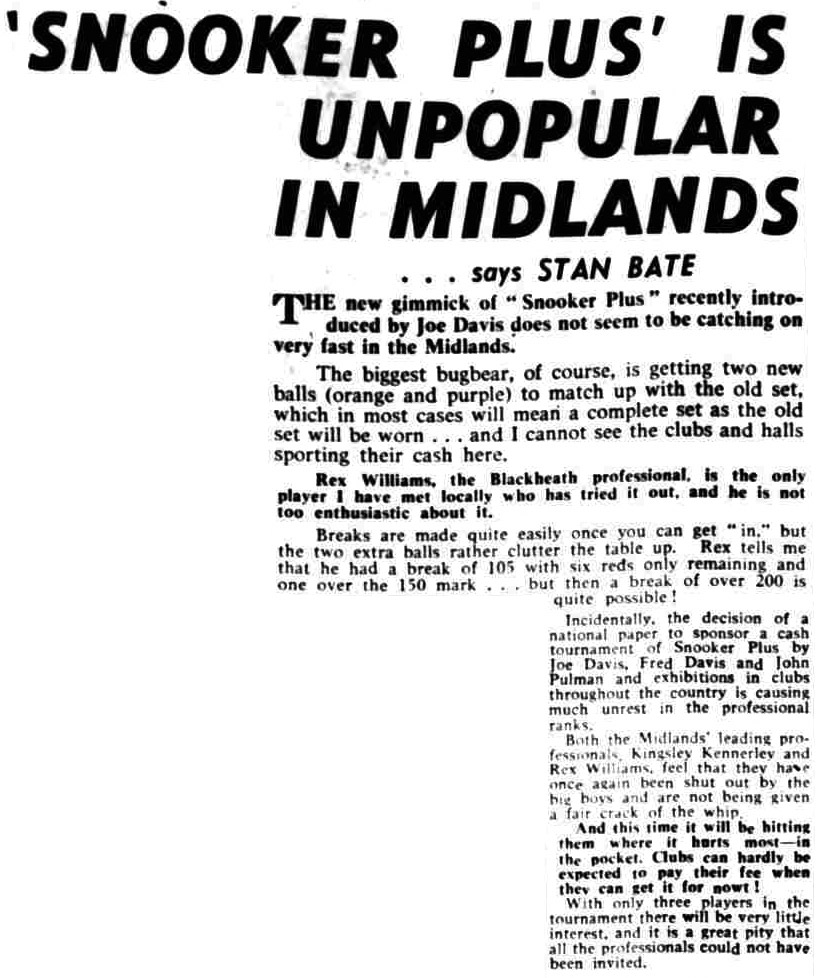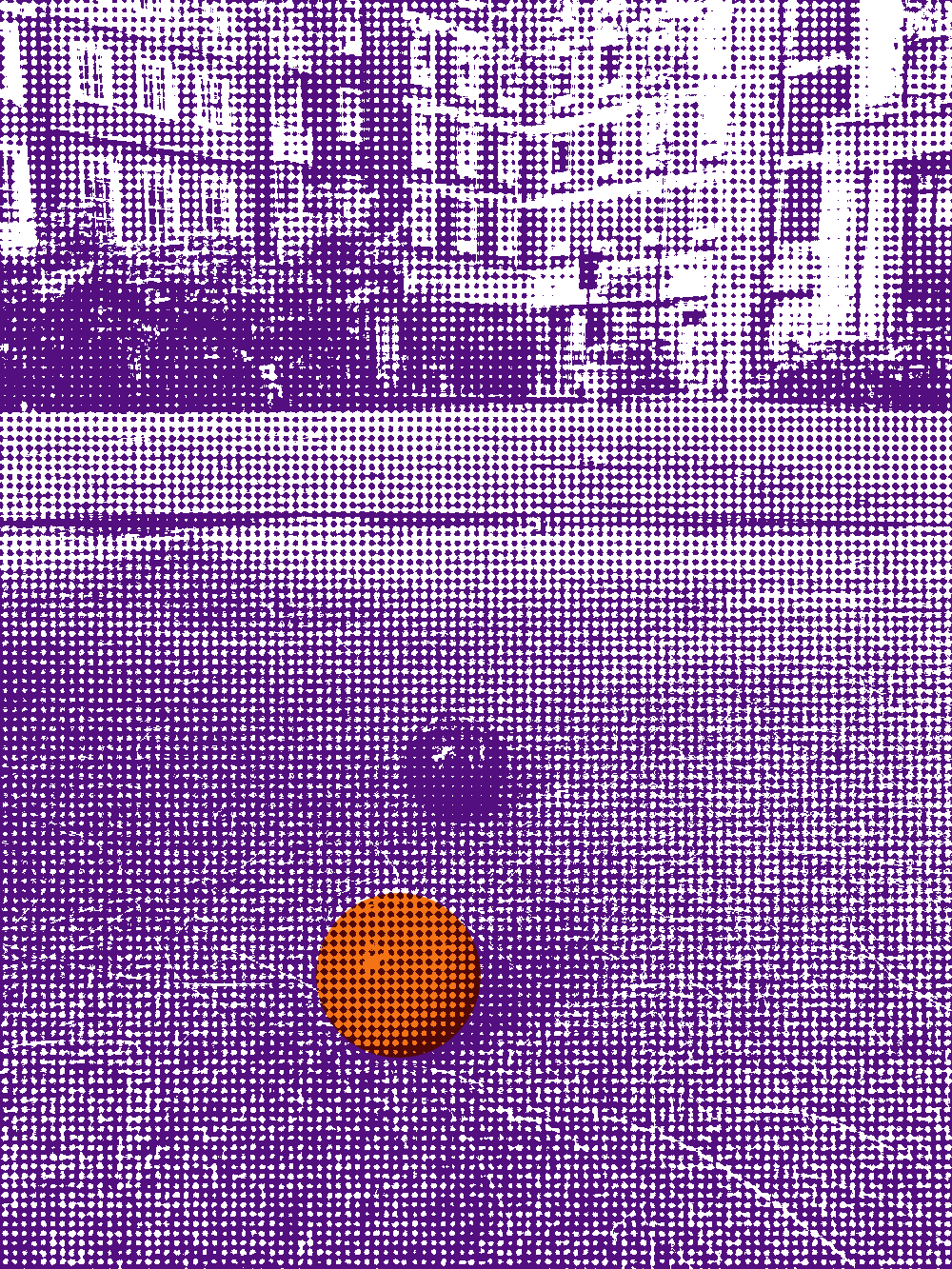London, October 1959. Coal smoke, pipe smoke and ale hangs heavy in the air. Harold Macmillan has just secured a landslide third term for the Conservatives, and Cliff and The Shadows are riding high in the charts. In Soho, Ronnie Scott's nightclub is soon to open its doors, and down the road in Burroughes Hall, a world first – and last – is taking place.
Joe Davis is snooker's first superstar, and at the age of 58, still a dominant force in the sport. He won the first fifteen world championships between 1927-47 (halted only by a six-year gap when the venue was destroyed in the Blitz), before retiring unbeaten from the tournament, but remaining a powerful presence in the game. They say no sport is bigger than one person, but Davis might dispute that. When he left snooker's main event missing its best player, he left the sport in the doldrums, where it's been floundering for the past decade.
Undaunted, Joe's closest rival, his little brother Fred swept in after him, winning eight world titles between 1948-56. An impressive sporting haul for two Derbyshire brothers, sons of a miner-turned-publican. Forever fighting his way out of Joe's shadow, a steely tenacity belies Fred's cheery demeanour around the table.
A relative whippersnapper at 35, John Pulman is the reigning world champion; a bittersweet title at a time when interest in snooker is at its nadir. He won the 1957 tournament, a woeful affair that attracted only four entrants, and was met with such apathy they didn't bother holding it the next year.
Snooker has always been a game of mavericks and chancers, and Joe spotted the opportunity to drag the sport out of a mire of internal wrangling and poor competition. The Grandfather of Snooker thus became the Father of Snooker Plus. His concept is a variation that enhances the break-building aspect of the game with the addition of two new balls: a bright orange, and a rich, deep purple, worth eight and ten points respectively. He doesn't explain why there's no nine-pointer; he doesn't have to. The rules are there to be broken, and Joe, Fred and John are leading the rebellion.
Joe speaks with great confidence in the potential of Snooker Plus: "This will make scoring possibilities far greater for the average player and will greatly increase the technique required of the top-grade player.' The authoritative-sounding Billiards Association and Control Council's reaction has been decidedly lukewarm however, and they've refused to get behind it: "The decision of the council was that after the game had had a fair trial Davis should get in touch with us again and we could then speak with a fair knowledge of it.'
The News of the World Tournament has been snooker's main event throughout the 1950s, overshadowing the Worlds due to Joe's involvement. It's this tournament that Joe has hijacked to launch Snooker Plus on the world, regardless of the lack of official backing. With imminent change, comes inevitable griping and sniping. "SNOOKER PLUS IS UNPOPULAR IN MIDLANDS" declares Stan Bate in the Sports Argus, who is troubled by the cost for clubs – not only of purchasing orange and purple balls, but getting an entire new set so the old, worn colours aren't literally outshone.
Bate also reports that Rex Williams and Kingsley Kennerley, the Midlands' leading players, "feel that they have once again been shut out by the big boys", with no invitation to compete. Whatever the reason, the inaugural Snooker Plus tournament is indeed a three-man affair, with just the Davis brothers and Pulman competing for a share of the £750 prize fund.
It kicks off in fine style on Monday 26th October at Burroughes Hall, Soho's long-established billiards and snooker venue. The Snooker Plus tournament table is racked up for the first time, with the orange ball sitting halfway between pink and blue, and the tantalising ten-point purple placed between blue and brown, creating a pathway of high-scoring potential – if you've got the positional play to keep making it up the table from the reds. Day one sees the first public Snooker Plus century, a sparkling 108 for Joe against his brother. The maximum possible break is now 210 points; Joe made regular snooker's first official maximum 147 break in 1955, and a mighty new record will surely be in his sights.
In this three-way competition, best-of-25 matches are played out over two days, with each competitor scheduled to play the other three times. The winner of the most matches claims the £400 first prize, and perhaps a place in snooker history. Joe is indomitable over the four-week tournament, winning five of his six matches. Only his brother manages to claw one back against him, but by then it's too late. Joe is already the winner before the final match is played on the 20th and 21st November, with an unassailable lead making for an anticlimactic end to the tournament. Fred is a distant second place with two match wins. The outsider, both familial and in snooker, comes in third; John winning two matches, but with fewer frames under his belt.
Snooker Plus might not have saved snooker – that'll come ten years later, with colour television and Pot Black. In fact it not only died a swift death, but also killed off the News of the World tournament, which was never repeated again. But with Snooker Plus the old guard took a shot at a revolution, and as most sportspeople would surely agree, a spectacular failure is surely better than not trying at all.
Denise Courcoux is a writer and snooker fan based in New Brighton, Merseyside.
Twitter: @denisecourcoux

Joe Davis (striking) & John Pulman at Burroughes Hall

The orange and purple balls of Snooker Plus

Article from the Sports Argus, 10 Oct 1959

The current site of the now demolished Burroughes Hall, Soho Square, London